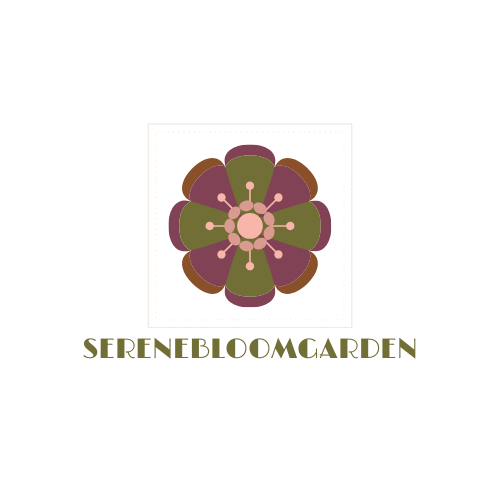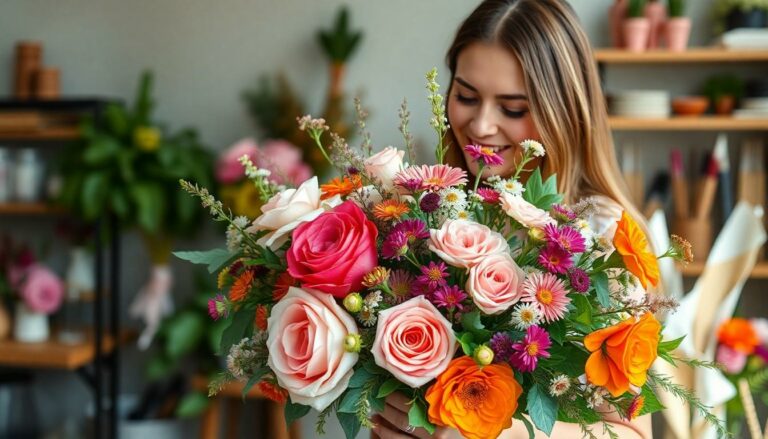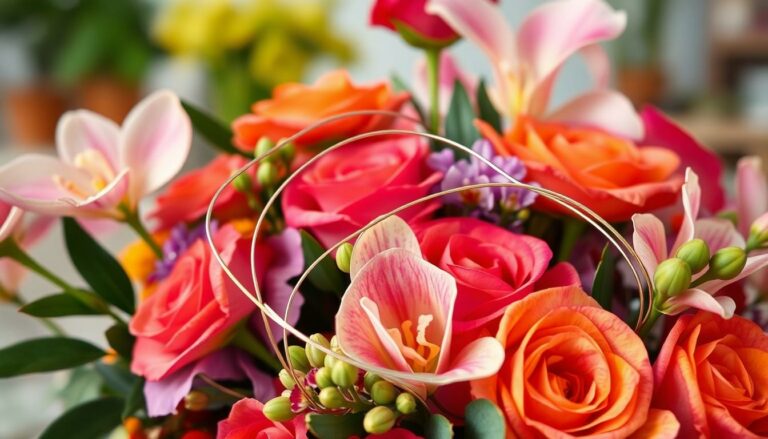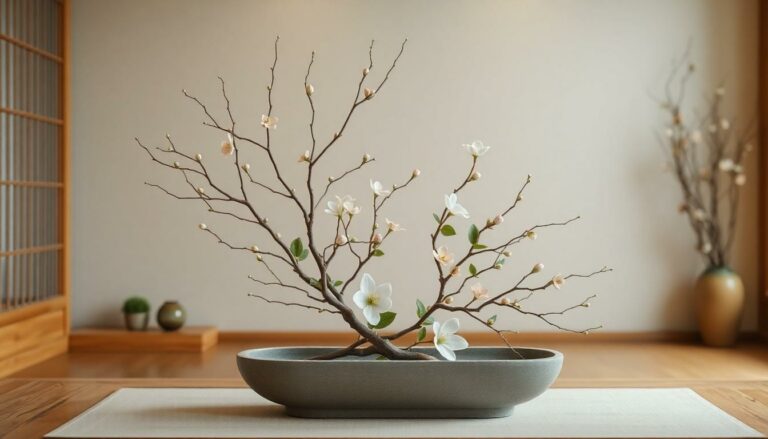Floral design isn’t just about sticking flowers in a vase and calling it a day. It’s an art form that transforms nature’s beauty into stunning arrangements that can make any occasion feel special. Whether it’s a wedding, a birthday, or just a Tuesday, a well-crafted floral display can brighten up a room and elevate the mood faster than a double shot of espresso.
What is Floral Design
Floral design involves creating visually appealing arrangements using flowers, foliage, and other botanical elements. The process integrates artistic vision with practical techniques to shape unique displays for various occasions. Designers consider color, texture, and form to evoke specific emotions and atmospheres.
Techniques in floral design include traditional arrangements, modern styles, and freeform creations. Each technique offers distinct aesthetic qualities, allowing designers to tailor their work to specific themes and events. For instance, compact arrangements might suit formal occasions, while loose, organic designs often enhance casual settings.
The role of floral design extends to both personal and commercial spaces. In residences, floral arrangements can brighten rooms and add warmth. For businesses, they create inviting environments that reflect brand values and enhance customer experiences.
Seasonality plays a crucial role in floral design. Selecting flowers aligning with the current season not only ensures freshness but also embodies seasonal themes. Spring might feature tulips and daffodils, while autumn arrangements often showcase chrysanthemums and sunflowers.
Floral design has rich cultural significance across various traditions. In weddings, specific flowers symbolize love and commitment, while funerals often utilize blossoms conveying sympathy and remembrance. Understanding these meanings allows designers to create arrangements with deeper emotional resonance.
Ultimately, floral design captures the beauty of nature and elevates any event or space through thoughtful arrangements. Through careful selection and arrangement techniques, floral designers transform ordinary settings into extraordinary experiences.
History of Floral Design
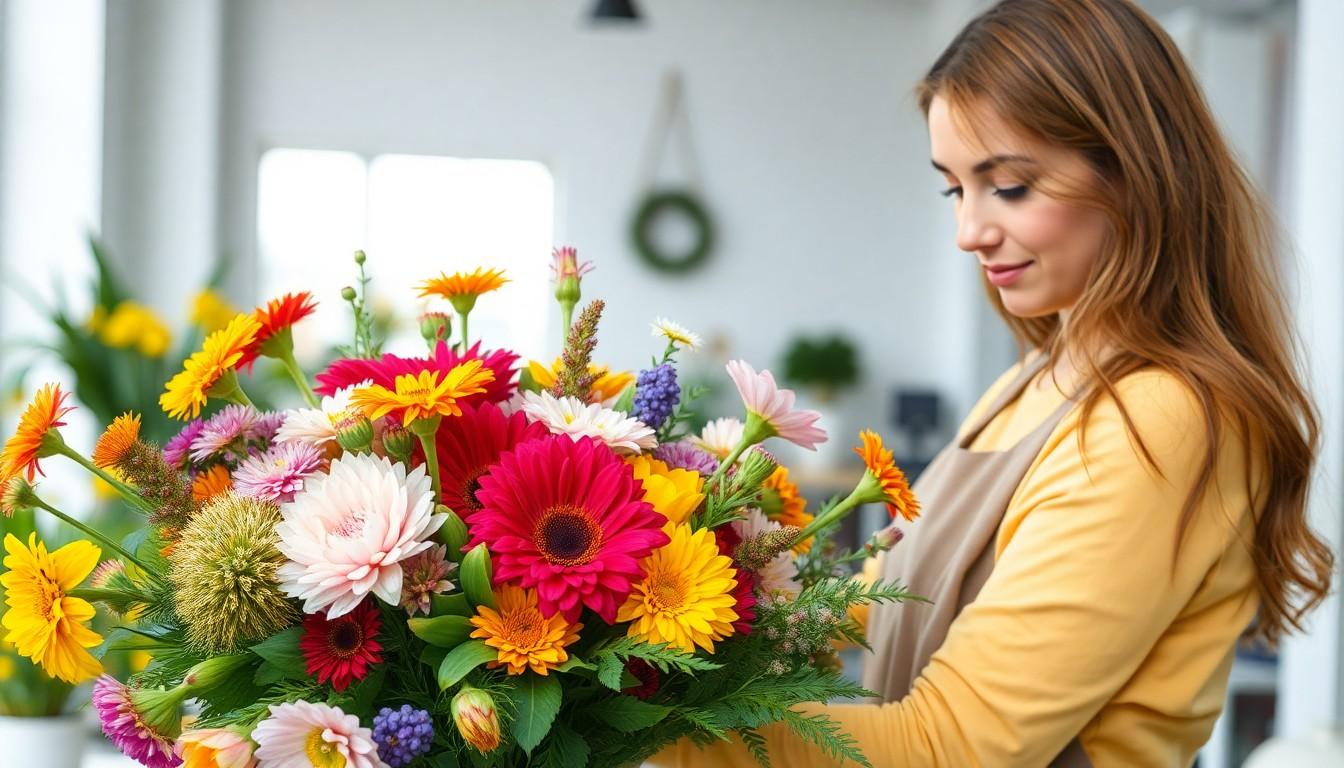
Floral design carries a rich historical legacy, intertwining artistic expression with cultural practices. Exploring its origins reveals connections to ancient traditions and modern advancements.
Ancient Traditions
Ancient cultures embraced floral design, using flowers in ceremonies and as offerings. Egyptians adorned tombs with blossoms, symbolizing rebirth and the afterlife. The Greeks celebrated beauty through floral crowns, often reserved for gods and victors. In Chinese culture, flowers represent various emotions, guiding traditions around celebrations and mourning. Flowers enhanced rituals and festivals, demonstrating the profound relationship between nature and spirituality in these societies.
Modern Developments
Modern floral design has evolved dramatically, reflecting individual creativity and contemporary tastes. The 20th century introduced diverse styles, such as Ikebana from Japan, which emphasizes minimalism and balance. Floral designers today blend traditional techniques with innovative approaches, creating unique arrangements for various occasions. Sustainability has become a priority as more designers choose local, seasonal flowers to reduce environmental impact. Technological advancements, including online ordering, have revolutionized accessibility, allowing clients to explore an array of floral options tailored to their needs.
Elements of Floral Design
Floral design incorporates several fundamental elements that contribute to the overall appeal and effectiveness of arrangements. Understanding these elements helps designers create stunning displays.
Line
Line in floral design refers to the visual path that leads the eye through an arrangement. Curved lines create softness and movement, while straight lines impart structure and formality. The use of line helps establish balance and can direct focus toward focal points. Long-stemmed flowers, branches, or ribbons can enhance this aspect effectively. Creating a harmonious interplay of different lines ensures the arrangement feels dynamic and engaging.
Form
Form describes the overall shape or silhouette of an arrangement. This element can range from round and compact to linear and tall. Designers often use various shapes to complement specific themes or occasions. For instance, bouquets for weddings may embrace softer, round forms, while modern arrangements might incorporate more angular lines. The choice of form illuminates the personality of the design, allowing visual storytelling through structure and style.
Color
Color plays a crucial role in floral design, evoking emotions and setting the atmosphere. Various hues can convey different feelings; warm colors like reds and yellows create vibrancy, while cool colors such as blues and greens promote calmness. Designers often choose a color palette that aligns with the intended theme or season. Harmonizing contrasting colors can elevate an arrangement, contributing to visual interest and emotional impact in the space.
Texture
Texture adds depth and dimension to floral arrangements, enriching the overall aesthetic. Combining different leafy greens, smooth petals, and coarse elements creates tactile contrast. Foliage varieties can enhance visual intrigue and contribute to the sensory experience. Designers strategically layer textures, ensuring each component interacts harmoniously. This attention to texture elevates the design, transforming simple arrangements into lush, captivating displays.
Techniques Used in Floral Design
Floral design incorporates various techniques that enhance the beauty and longevity of arrangements.
Arranging
Arranging plays a vital role in floral design. They strategically position flowers and foliage to create harmonious compositions. Designers consider balance, proportion, and focal points while crafting their displays. Effective arrangements draw the viewer’s eye and evoke the desired emotional response. Utilizing a variety of shapes and sizes adds visual interest to each piece. The interplay of different colors enhances overall appeal, ensuring arrangements capture attention. Ideal floral arrangements not only reflect the occasion but also convey the designer’s artistic vision.
Wiring
Wiring is essential for securing delicate blooms and maintaining shape. Designers use floral wire to support stems, ensuring stability and enhancing visual impact. This technique enables the inclusion of fragile flowers that might otherwise droop or break. By creating a sturdy foundation, designers enhance the overall structure and longevity of their arrangements. They can achieve unique shapes and silhouettes through clever wiring techniques. The result is a polished, professional display that stands the test of time.
Taping
Taping is crucial for creating a strong base for floral arrangements. Florists utilize floral tape to support stems and maintain arrangement structure. Adding tape to the base allows for optimal positioning of each flower and prevents them from shifting. This technique facilitates intricate designs while keeping each component securely in place. Enhancing stability contributes significantly to the overall presentation. Proper taping techniques ensure longevity and consistent visual appeal in any floral design.
Dynamic Reflection of Cultural Significance
Floral design is a vibrant and intricate art form that plays a crucial role in enhancing both personal and public spaces. By skillfully combining color, texture, and form, designers create stunning arrangements that evoke emotions and elevate any occasion. The blend of traditional techniques with modern innovations showcases the versatility and creativity within this field.
As designers continue to embrace sustainability and seasonal selections, floral design remains a dynamic reflection of cultural significance and artistic expression. Ultimately, this captivating craft transforms ordinary moments into extraordinary experiences, leaving a lasting impression on those who encounter its beauty.
